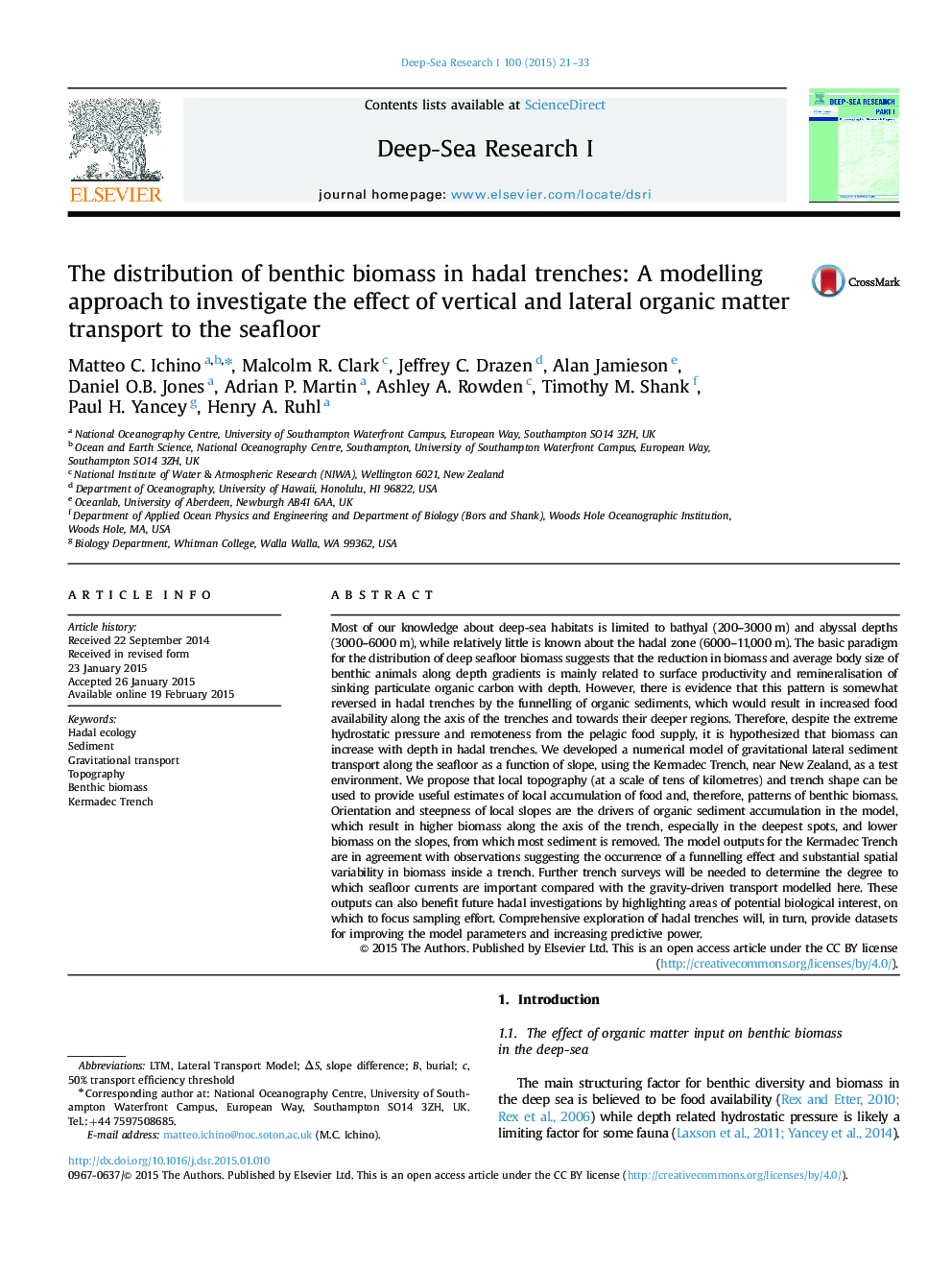| کد مقاله | کد نشریه | سال انتشار | مقاله انگلیسی | نسخه تمام متن |
|---|---|---|---|---|
| 6383447 | 1626330 | 2015 | 13 صفحه PDF | دانلود رایگان |
- We present a testable and tunable model of gravitational lateral sediment transports in a hadal setting.
- The model predicts benthic standing stocks by accounting for vertical and lateral transport of organic sediments.
- Model results highlight the potential role of local topography in determining biomass distribution.
- Model results can help prioritize likely areas of high biomass in the trenches to guide future sampling.
Most of our knowledge about deep-sea habitats is limited to bathyal (200-3000Â m) and abyssal depths (3000-6000Â m), while relatively little is known about the hadal zone (6000-11,000Â m). The basic paradigm for the distribution of deep seafloor biomass suggests that the reduction in biomass and average body size of benthic animals along depth gradients is mainly related to surface productivity and remineralisation of sinking particulate organic carbon with depth. However, there is evidence that this pattern is somewhat reversed in hadal trenches by the funnelling of organic sediments, which would result in increased food availability along the axis of the trenches and towards their deeper regions. Therefore, despite the extreme hydrostatic pressure and remoteness from the pelagic food supply, it is hypothesized that biomass can increase with depth in hadal trenches. We developed a numerical model of gravitational lateral sediment transport along the seafloor as a function of slope, using the Kermadec Trench, near New Zealand, as a test environment. We propose that local topography (at a scale of tens of kilometres) and trench shape can be used to provide useful estimates of local accumulation of food and, therefore, patterns of benthic biomass. Orientation and steepness of local slopes are the drivers of organic sediment accumulation in the model, which result in higher biomass along the axis of the trench, especially in the deepest spots, and lower biomass on the slopes, from which most sediment is removed. The model outputs for the Kermadec Trench are in agreement with observations suggesting the occurrence of a funnelling effect and substantial spatial variability in biomass inside a trench. Further trench surveys will be needed to determine the degree to which seafloor currents are important compared with the gravity-driven transport modelled here. These outputs can also benefit future hadal investigations by highlighting areas of potential biological interest, on which to focus sampling effort. Comprehensive exploration of hadal trenches will, in turn, provide datasets for improving the model parameters and increasing predictive power.
Journal: Deep Sea Research Part I: Oceanographic Research Papers - Volume 100, June 2015, Pages 21-33
